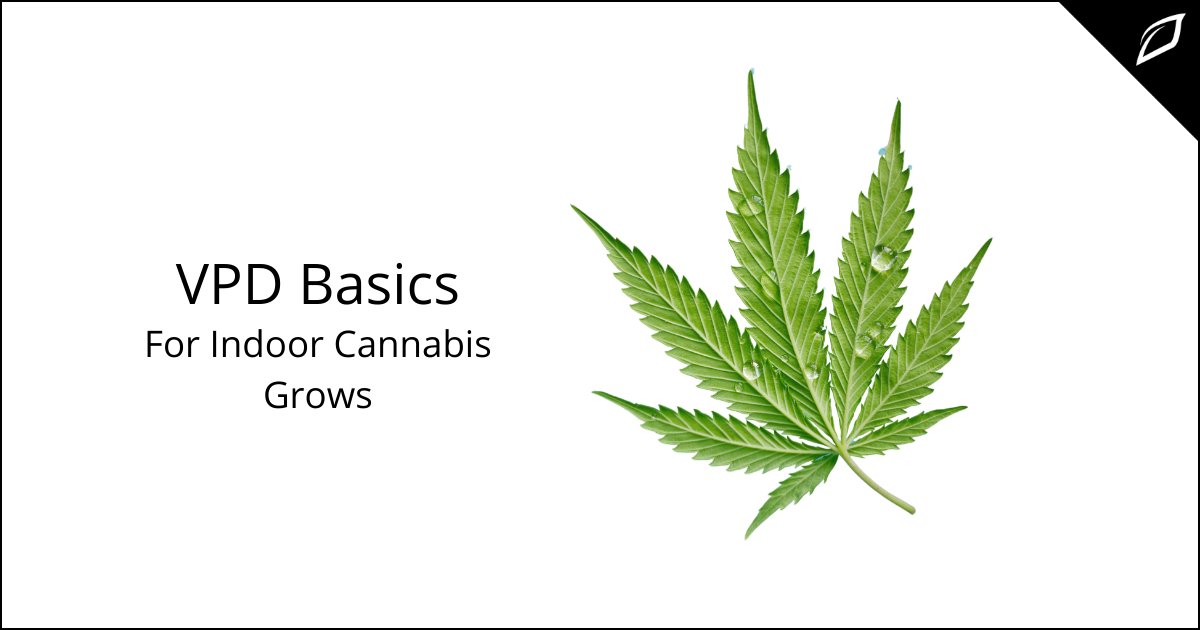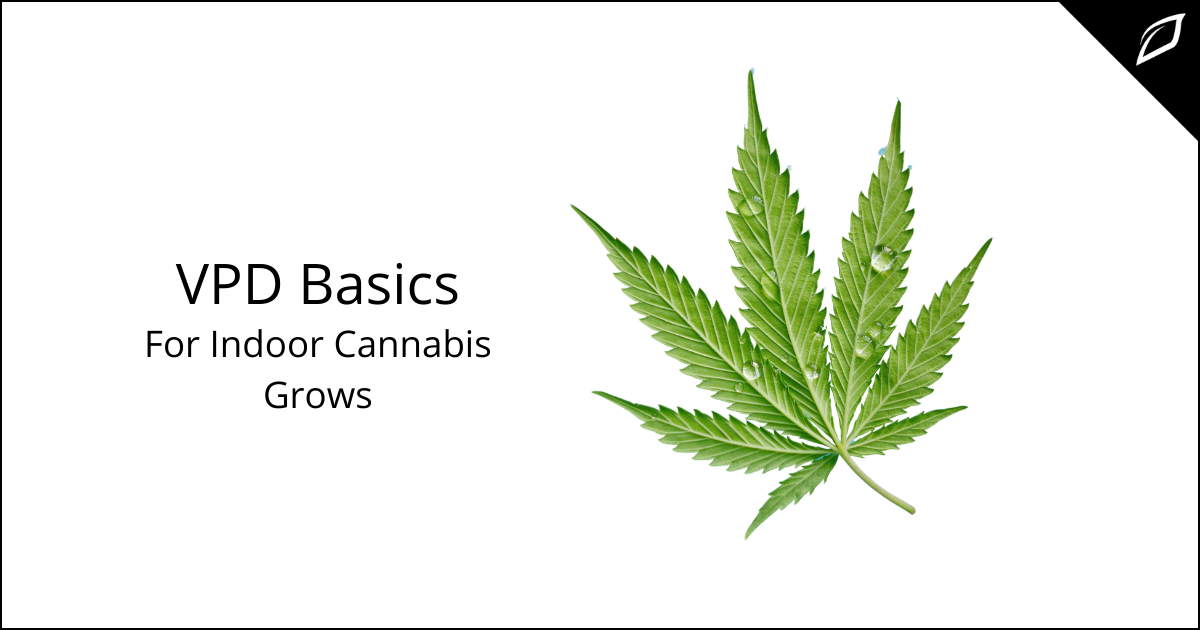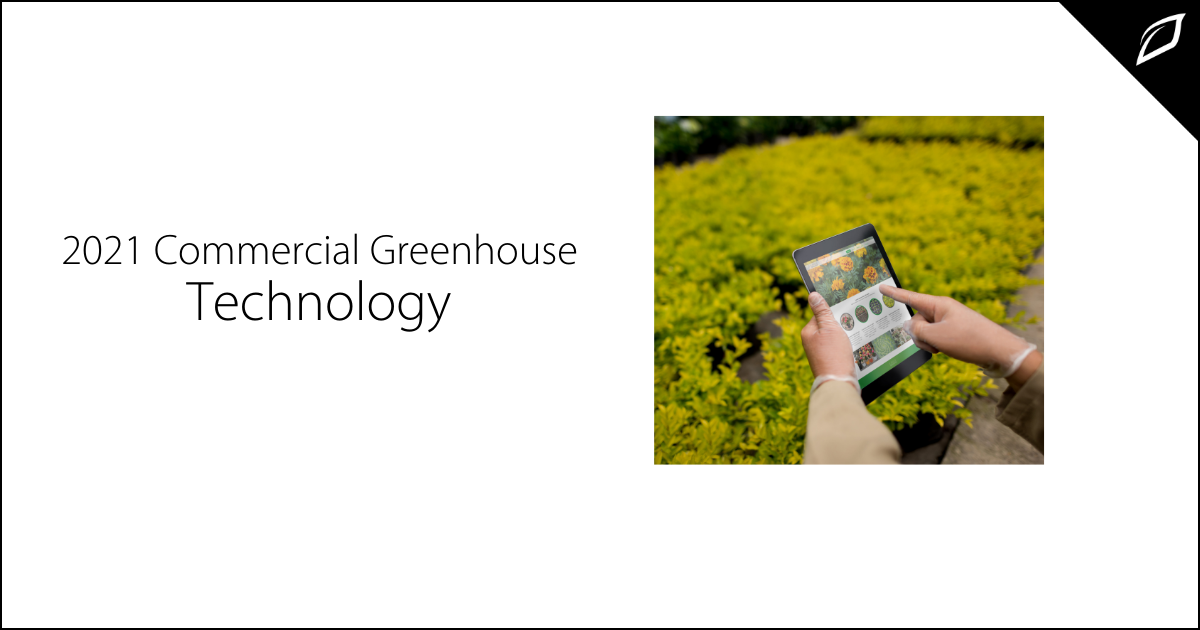Can Big Data Increase Your Cannabis Yield?
Collecting data in your indoor grow, or greenhouse provides critical information that directly impacts your cultivation operation's success....
2 min read
Joy King : Oct 27, 2020 8:22:38 AM

With so many conditions to measure in a climate-controlled greenhouse or indoor grow, it can become overwhelming. Each condition has a potential impact on how your plants grow and the level of their health and ability to deliver a consistent crop. Whether you're growing tomatoes or cannabis, let's examine the importance of monitoring VPD, vapor pressure deficit.
What is VPD?
VPD is the difference between vapor pressure within a plant and the vapor pressure of the plant's air and is responsible for driving plant transpiration, which directly impacts plant health. Transpiration causes nutrient uptake from the roots of a plant to the upper part of a plant. Water flow occurs when plants release water vapor into the air, similar to sweating—measured in pounds per square inch (psi) or kilopascal (kPa). VPD greater than 1.0 kPa means that the air can still hold a large amount of water.
The Importance of VPD
VPD allows growers to recognize stress in their plants and identify the ideal range of temperature and humidity to provide optimal growing conditions. VPD also provides data that can assist growers in understanding CO2 intake and nutrient efficiency providing you're monitoring levels with high quality sensors..
If VPD is too low, it inhibits the plant from releasing or evaporating water from the leaf, blocking minerals from traveling from the roots to growing plant cells. If VPD is too high, excessive evaporation may cause the stomata to close, halting photosynthesis, causing injury.
Factors That Influence VPD
Relative humidity or RH, temperature, and lighting can all be determining factors that influence VPD. Most academic studies don't consider lighting to be a factor. However, most of the academic studies we found were done in greenhouses, where the impact of warm, artificial lighting wouldn't impact VPD. Indoor grow rooms need to keep the heat from lighting in mind when setting environmental controls.
Relative Humidity
Relative humidity refers to the amount of water vapor in the air versus its capacity to hold water. The volume of water that air can hold changes with temperature; hotter air has a greater water-holding ability than colder air. The water-holding capacity of air almost doubles with every 20-degree increase in temperature. Therefore, the air at 80-degree can hold twice the amount of water than 60-degree.
Temperature
Plants operate similarly to cold-blooded animals in that their metabolism and the rate of photosynthesis increase in line with the air temperature. When temperatures are low, barely any photosynthesis will happen, regardless of how much light there is. A 37 degree F increase in temperature can increase VPD by 45%.
Group Effort
When the relative humidity and ambient air temperature are balanced, it creates a goldilocks zone where everything works just right. Not too hot, or humid, not too cold. Every plant's needs are different, but most indoor cannabis growers follow a formula that provides a place to start. But as with anything in your grow room, you'll need to experiment to dial in the perfect environment.
Vegetative Stage:
Flowering Stage:
Happy growing!

.png)
Collecting data in your indoor grow, or greenhouse provides critical information that directly impacts your cultivation operation's success....

Sustainability in farming is about more than saving precious resources like water; it's about creating a growing environment that takes the guesswork...

In a world where technology moves at an unprecedented pace, commercial growers require productivity and predictability in their greenhouse...